
The heat is on and the five picture-postcard villages with their pastel houses and ancient cathedrals are packed with day trippers. Every student within flying distance on a summer break seems to have descended here and the dress code is bare as you dare.
It’s the price of fame for the Cinque Terre, but it’s so much better than the alternatives for the “five lands” perched ever so scenically on this impossibly steep coast of the Mediterranean.
There’s a good reason why these tiny, picture book towns clinging to the cliffs are so remarkably intact. They were untouched by progress for decades because of their sheer isolation. To get to them by sea is tricky and by land they’re a trip down hairpin paths that even mules fear to tread.
Let’s explore why they’ve suddenly become the must-see destinations on the Italian Riviera:
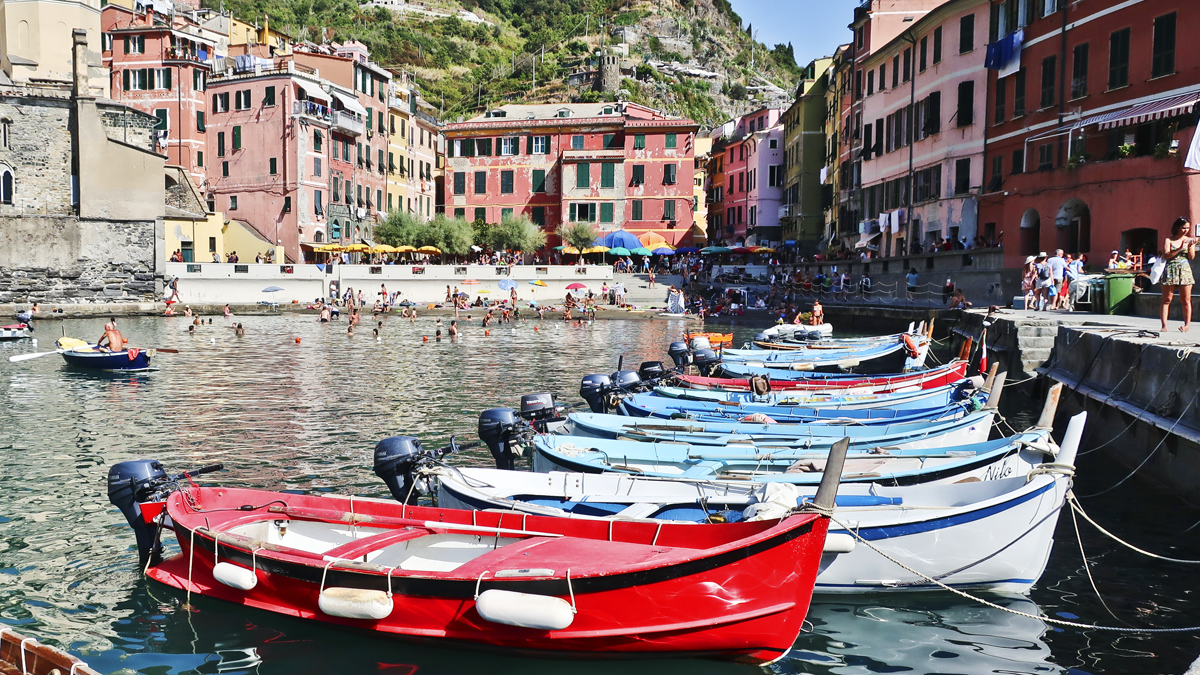
I’m glad that my excursion to explore the charms of the Cinque Terre by boat was organized by Regent Seven Seas Cruises–one of the many complimentary shore excursions offered daily on a Mediterranean cruise of Seven Seas Voyager. There are about 70 guests on the tour and rather than try to pack us all onto one bus to go to the pier where our tour boat departs, Regent divides us into small groups and we board three air conditioned coaches, each less than half full, so everyone gets a window seat.
At the ferry dock, a boat is stuffed with hundreds of day trippers who are hanging out the windows and over the rails. Meanwhile, our small group gets an identical-sized boat just for us, with ample seating on two decks. Our guide (from Trumpy Tours—no relation to the guy in the White House) explains we’re starting from La Spezia, that was a beautiful harbor town before a navy base and a container port took over most of the water’s edges. Today its claims to fame are a school for navy commandos and being the jumping off point for ferries to the Cinque Terre.
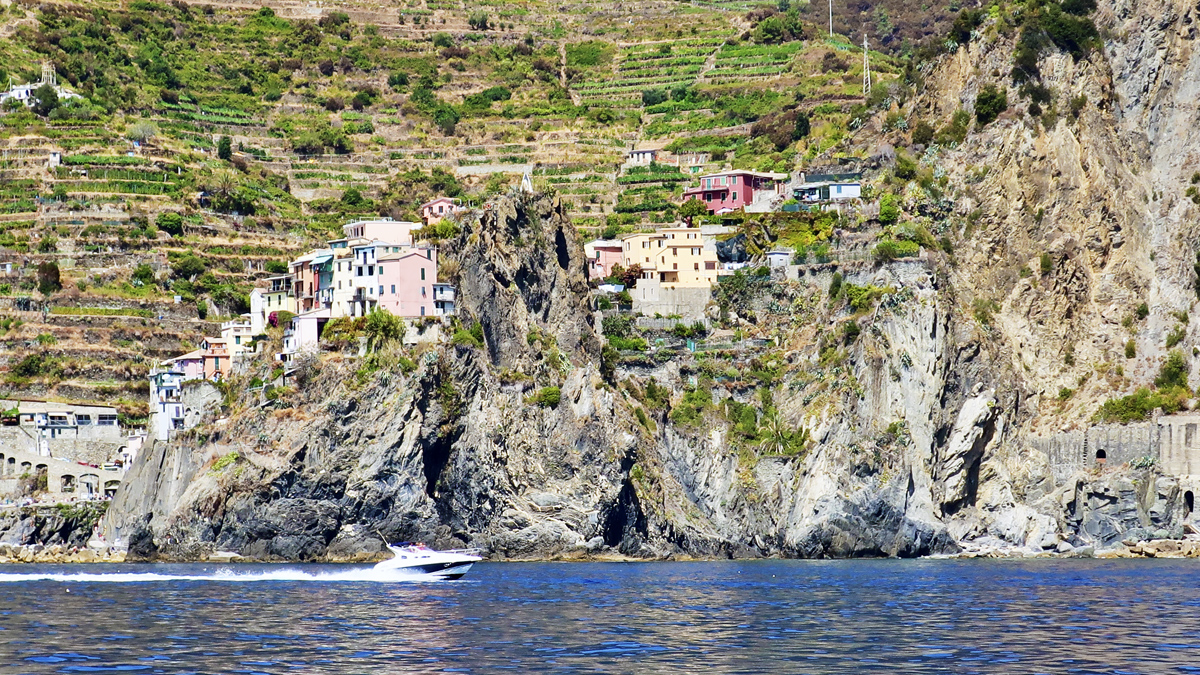
The villages along this Mediterranean coast were built to be as unreachable as possible. They’re perched on cliffs and walled to protect against attacks by pirates during the Middle Ages. But in modern times, the problem had been not keeping people out, but getting people to come to them, we’re told. The main crops were grapes and olives and growing them on the almost- vertical hillsides is a perilous business. Farmers still tie themselves with ropes to poles at the top of the hills to keep a slip from turning into a free-fall to the bottom.
The lack of beaches along this coast made the towns resistant to the growth of tourism, but all that changed when the Italian government recognized it had a treasure in their unspoiled beauty. It declared Cinque Terre National Park in 1999, to protect the towns and the environment along the coast.
Then UNESCO put the area on the list of endangered world heritage sites, which made it eligible for international grants that have repaired the forts, cathedrals and home facades and brought new life to the five towns, which had withered.
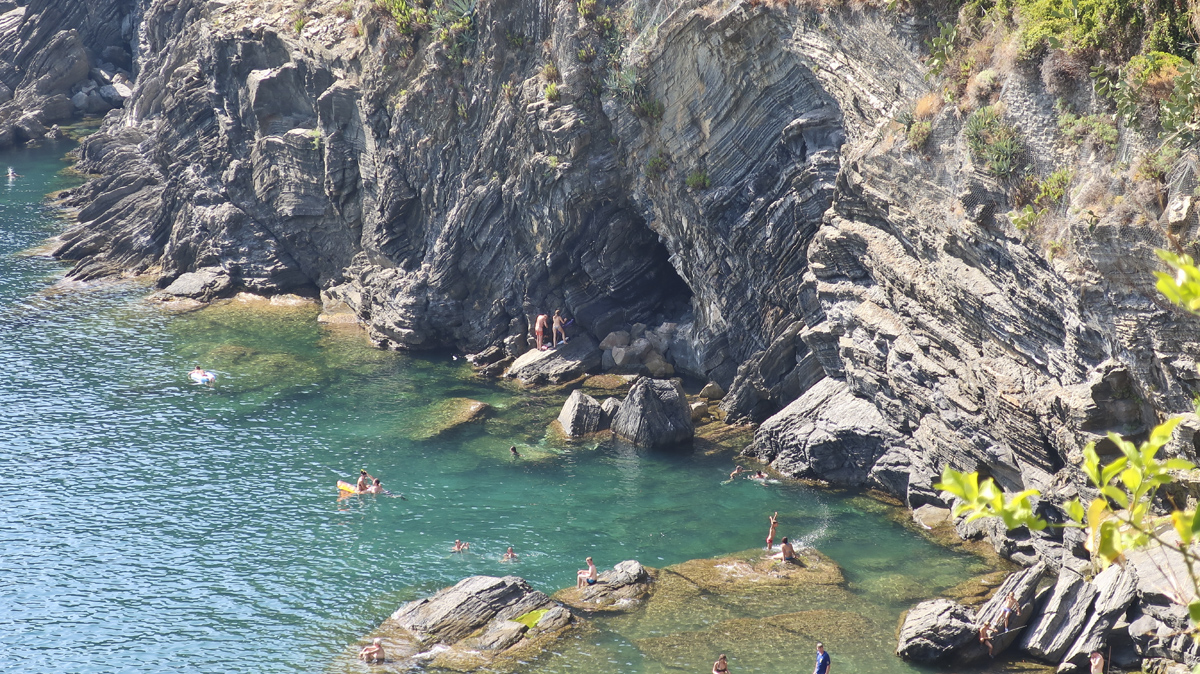
Now they’re magnets for artists, trekkers and romantics, their charm protected to the point that even colors of the houses are regulated by a commissioner of good taste from the community government. Even the twisted layers of the cliffs are naturally artistic, with streaks of white dolomite swirling into layers of red rock rich in iron, which contrasts beautifully with the deep blues of the Mediterranean.
The villages seem almost surreal as they appear one by one on an hour of cruising along the coast.
Uno) Riomaggiore
The largest of the five protected villages, its population still only numbers 1,500. Its colorful houses appear to spill into a gorge and some of them actually did slide into it when torrential rains in 2011 washed mudslides down the hills. A beautiful walking trail along the coast called the Via dell’Amore (the walk of love) was completely swept away then and it’s not yet been rebuilt. But the town itself has been restored beautifully.
Due) Manarola
The next village still has a population of fishermen, although these days its tiny harbor is filled mostly with sailboats and dinghys for rent to tourists. The vineyards terraced on the cliffs here are the center of the production of a famed Cinque Terre wine, Sciacchetrà.
Tre) Corniglia
This picturesque village seems to hang in mid-air. It’s on a ridge that’s is completely inaccessible from the sea. With a permanent population of only 150 it has a feeling of remoteness and quiet grace even when tourists fill the small ristorantes around its small main square.
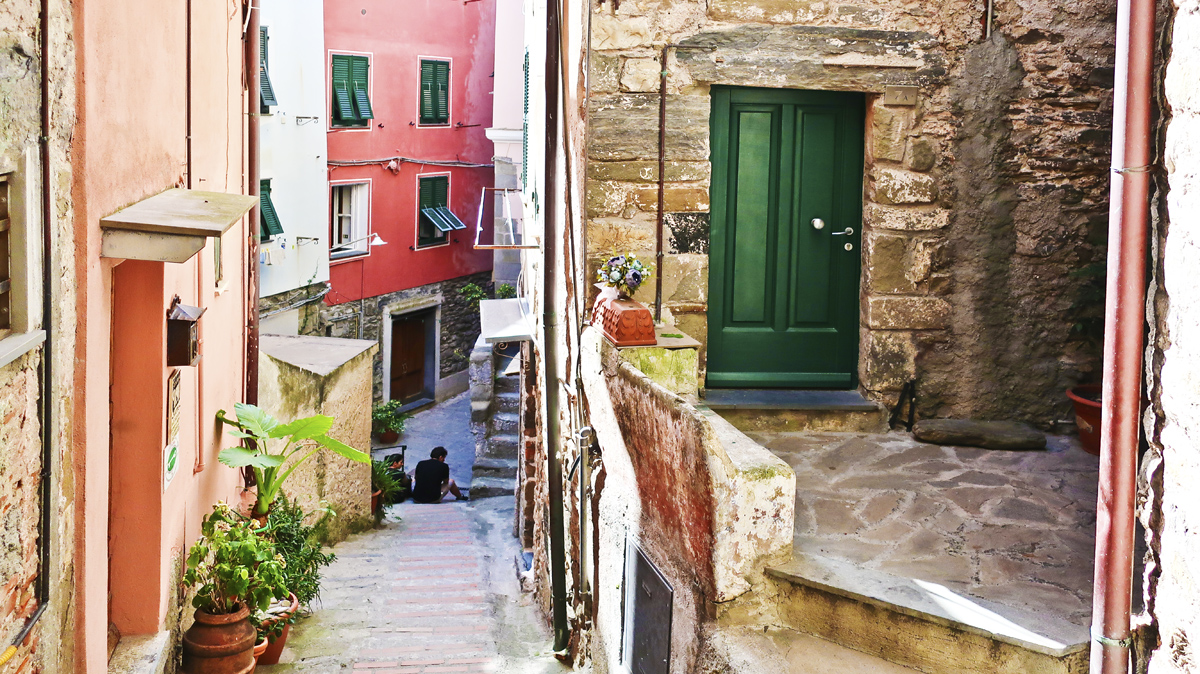
Quattro) Monterosso al Mare
It’s the only one of the five villages that actually has a natural sand beach and it boasts a few resort hotels because of it. The beach is narrow and it wraps around the town, so the coast seems over-run on hot summer afternoons by a vast crowd of nearly naked sunbathers and a profusion of colorful rental beach chairs. It actually looks a lot more peaceful when viewed from the water on a boat.
The large castle and convent of the Capuchin Friars built in the fifteenth century on the summit of the mountain is visible from all parts of the Cinque Terre and it’s a prime tourist attraction for its ornate wooden altars and a painting of the crucifixion by the Flemish painter Anthony Van Dyck.

Cinque) Vernazza
This is the village everyone wants to spend the most time in because of its shopping and wide range of restaurants, but through most of its history its main business was growing grapes and catching enough fish to make it through the day. Its secluded harbor for mooring is the main reason the remarkably quaint town and a set of piers developed around it.
This is where the crowds can get oppressive in the summer rush. There’s finally a road into Vernazza that opened in 2012, but the parking is a mile from the town. The main way to get into the town is by train or the ferries. And come they do by the train and boatload on hot summer days. In the town center, swimming and sunning on the rocks seems to be the numero uno activity when visitors are not shopping, eating or sampling a locally made wine known simply as Cinque Terre.
But it’s easy to escape the crowds by heading uphill, to the vaulted Gothic cathedral of Margherita di Antiocha and climbing the staircases and exploring paths around pink, ochre and yellow terraced homes with big wooden doors and planter boxes filled with flowers. It’s a lot of climbing up stairs to the tiny terraces that offer great views of the harbor, but the vistas of the glittering blue sea and the jetty lined by colorful, tiny boats are worth the effort.
A leisurely lunch at an outdoor café and a couple of hours of rambling around Vernazza and it’s time to head back.
Hundreds of sweaty backpackers are queued up around the jetty waiting impatiently for the next ferry, but our group can hop right aboard our private boat. Thanks Regent.
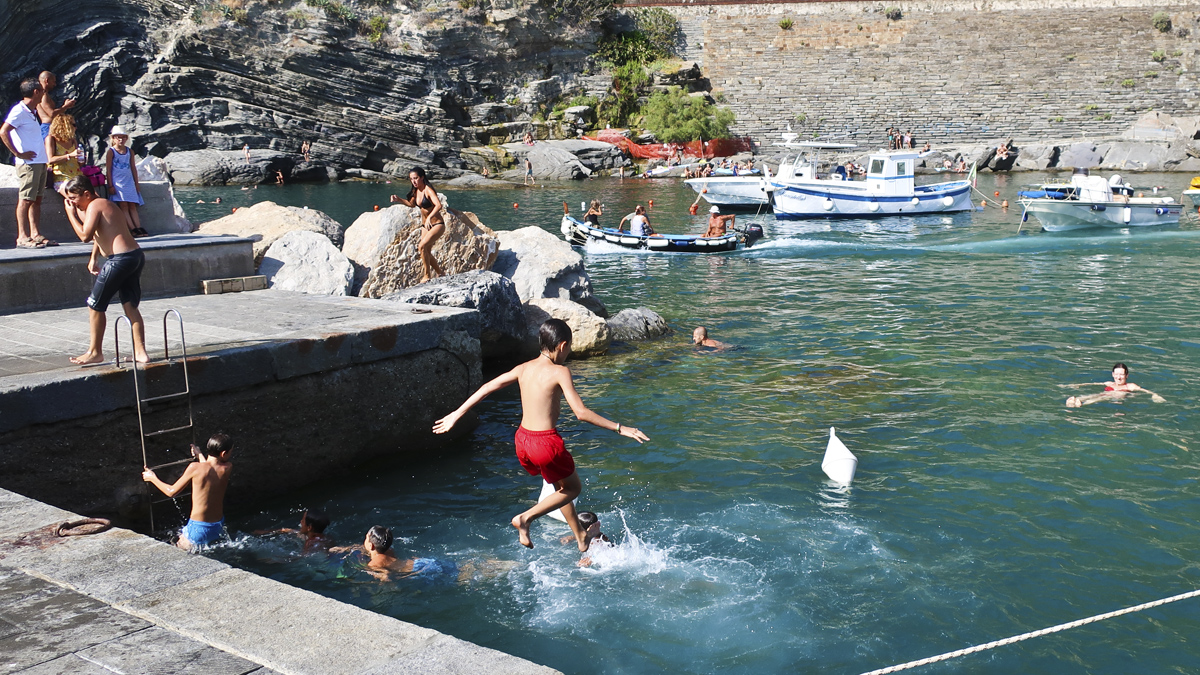
The conclusion as we sailed past the gorgeous towns again on our way back to the Seven Seas Voyager is that Cinque Terre is a definite must see any time you get the opportunity. But to really enjoy the historical beauty and unique isolation of these treasures, it might be better to time a visit in the spring or fall than in the high summer season.
Fortunately, the fab five will always be here –now that the world has finally recognized their beauty.





